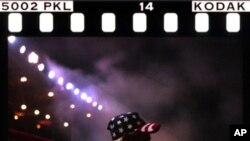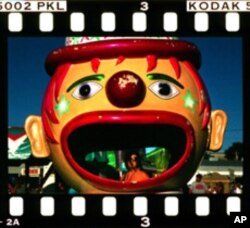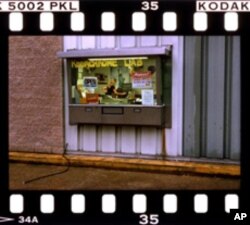Robert Cohen knows a thing or two about photography. He's a staff photographer for the St. Louis Post-Dispatch, one of America's most respected newspapers.
One day this past August, he set off to shoot photos at the Missouri State Fair in Sedalia. Fairs abound with wonderful photo opportunities: people eating corn dogs, riding the Ferris wheel, trying to win plush animals at the shooting gallery. Clowns applying face paint. Young lovers holding hands.
Cohen caught them all, not on his fine digital camera, but on a well-worn 35-millimeter model, using vintage 1996 Kodachrome 200 film. He had found a roll by surprise in a freezer.
As he wrote in the Post-Dispatch, Kodachrome was once America's film of choice. It produced, as he put it, pictures so real, so full of texture. The color, rich and grainy, gave the film a soul that no smart phone app can match.
The final little box of Kodachrome rolled off the Eastman-Kodak company's assembly line in 2009. To most Americans, film was already a technical dinosaur, alongside typewriters and Beta video recorders.
One could shoot and shoot and shoot digital photos without buying a single roll of celluloid film.
But film devotees are diehards, just as some audio purists insist that a good turntable spinning a classic vinyl record outperforms the finest digital music player. Lots of photographers and teachers have kept their darkrooms and stubbornly develop film there.
Robert Cohen relished his day at the fair, shooting his last 36 frames of film. Then he drove way over into Kansas, to the town of Parsons, 550 kilometers from St. Louis, to the last lab in America that still develops Kodachrome film. But only until December 30th, when it, too, will give up trying.
Cohen waited around town for three hours before the lab called to tell him his film was ready.
Yes, the clerk assured him, you appear to have pictures.
Good and memorable ones, it turned out. Real keepsakes.











